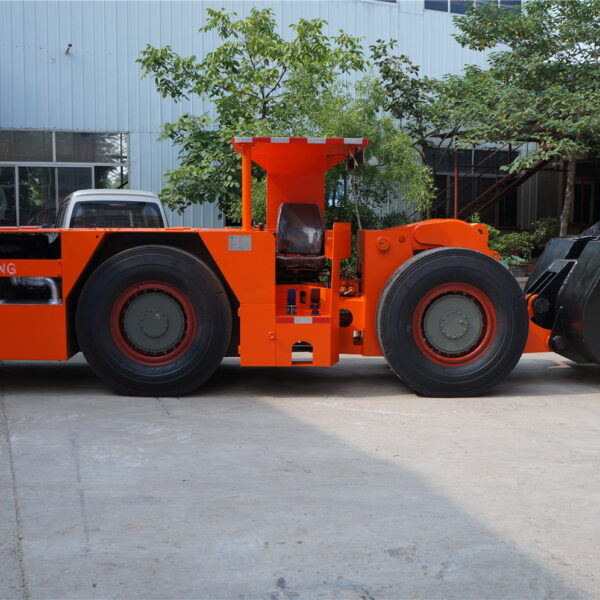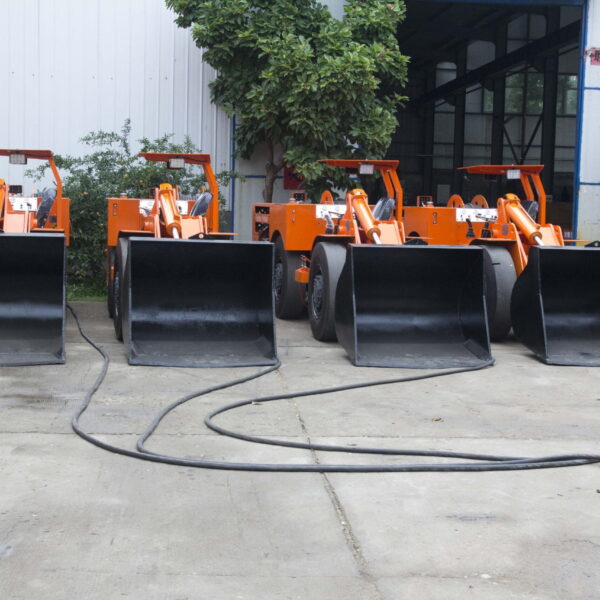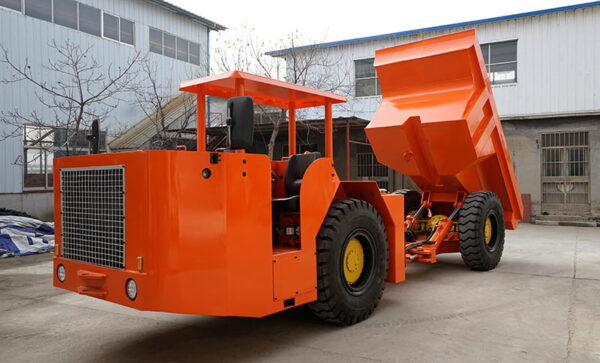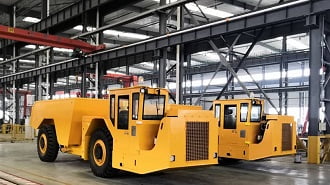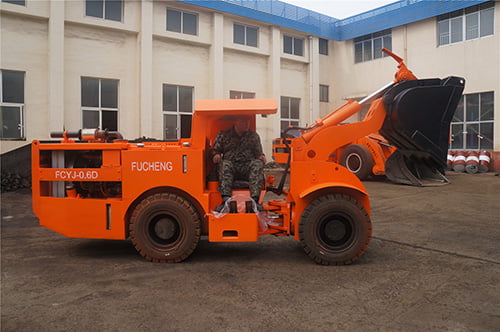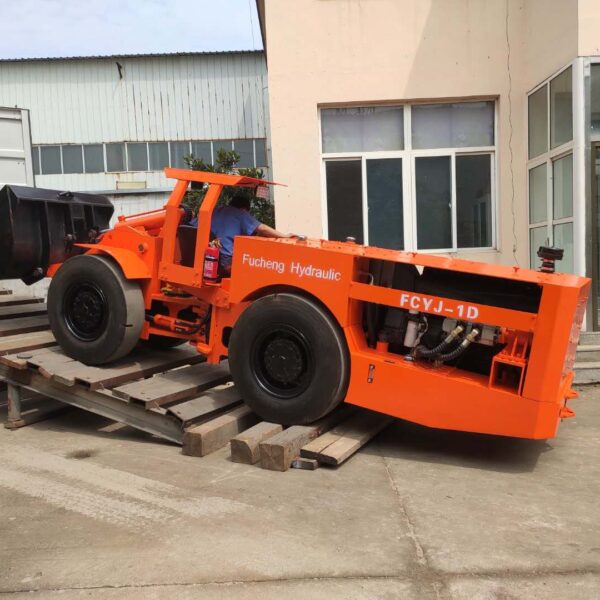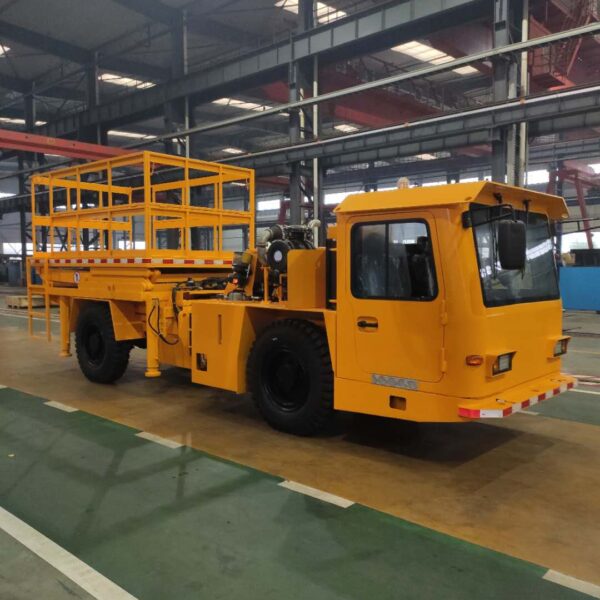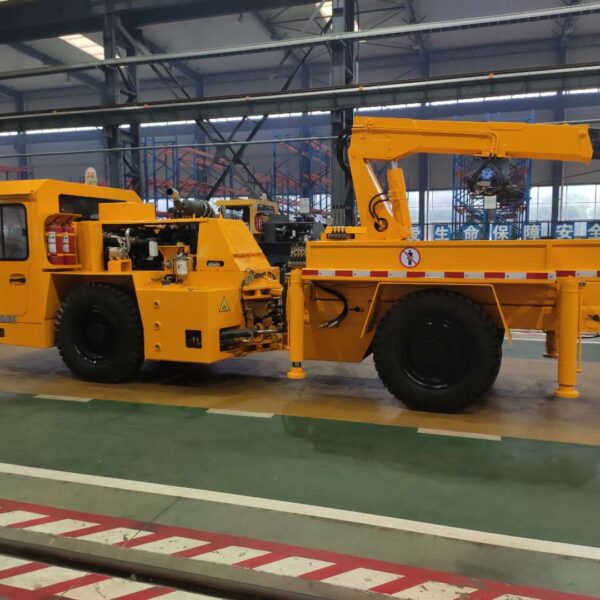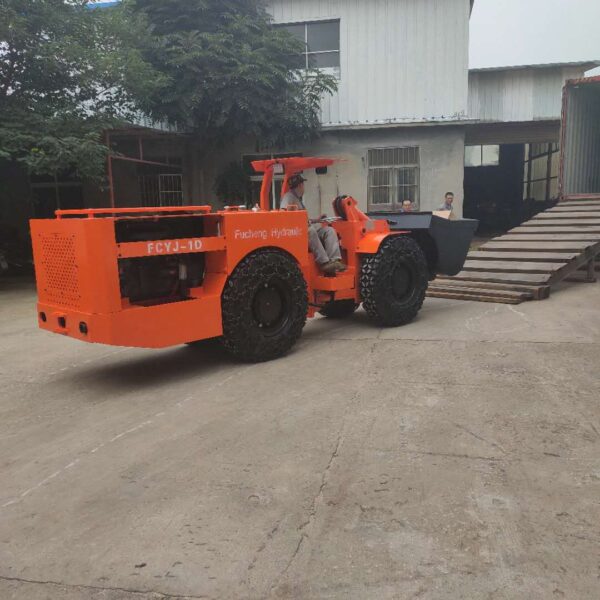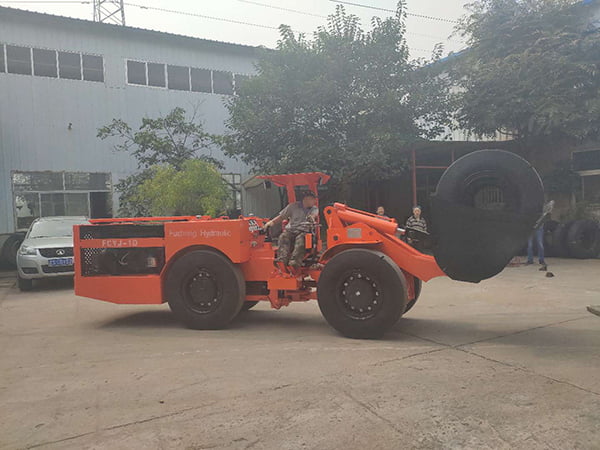A mineração é um setor secular e mundial, com raízes nos fundamentos da civilização e um efeito significativo em muitas das principais economias. Em termos de renda e itens vendidos, a mineração é responsável por quase 12% do PIB global. A mineração sempre foi e continuará sendo uma necessidade no planeta.
Tradicionalmente dependente de combustíveis fósseis para operar as máquinas de mineração subterrânea, o setor de mineração é conhecido como um setor com uso intensivo de carbono. Agora há uma nova tendência, e os equipamentos elétricos para mineração subterrânea são uma inovação relativamente nova.
Cada vez mais pessoas estão pedindo às empresas de mineração que prestem mais atenção ao desenvolvimento sustentável. As empresas de mineração também estão sob pressão das comunidades locais, dos consumidores e dos governos. Pessoas de todas as classes sociais pedem que elas reduzam as emissões de gases de efeito estufa, melhorem a qualidade do ar e protejam a saúde e a segurança das pessoas que vivem perto das minas.
Nesse contexto, os equipamentos elétricos de mineração subterrânea movidos a bateria começaram a substituir os veículos com motores a diesel, e os equipamentos com motores elétricos começaram a substituir os equipamentos hidráulicos.
Equipamentos elétricos para mineração subterrânea
Há várias vantagens em usar equipamentos elétricos de mineração subterrânea em relação à tecnologia padrão movida a diesel. No entanto, também há a possibilidade de economizar dinheiro.
Bateria vs. gasolina
Os veículos elétricos para mineração subterrânea podem superar seus equivalentes movidos a diesel em termos de potência. Por outro lado, as baterias ficaram mais potentes na última década, permitindo que os motores sejam ainda mais potentes.
Consequentemente, os atuais equipamentos elétricos de mineração subterrânea movidos a bateria são capazes de produzir cerca de duas vezes mais energia do que seus antecessores movidos a diesel. Quando se trata de transportar mercadorias volumosas, os equipamentos elétricos de mineração subterrânea podem se mover 10% mais rápido do que os caminhões movidos a diesel. Quando se trata de veículos elétricos, "o torque é absolutamente enorme".
A produtividade aprimorada pode ser o resultado disso. Por exemplo, considere o carregamento mais rápido de materiais, o transporte de pesos maiores e a viagem mais rápida.
Equipamentos elétricos de mineração subterrânea mais eficientes
Isso significa que equipamentos elétricos de mineração subterrânea menores podem transportar cargas mais pesadas do que normalmente seria possível com equipamentos a diesel maiores. Se um caminhão movido a diesel pode transportar 40 toneladas de material, um equipamento elétrico de mineração subterrânea do mesmo tamanho pode transportar 50 toneladas, como uma máquina de mineração LHD, por exemplo.
Como resultado da diminuição do tamanho dos equipamentos elétricos de mineração subterrânea, os túneis também podem ser menores. Assim, é menos necessário escavar novas minas destinadas a maquinário elétrico do que escavar aquelas construídas para maquinário pesado a diesel. Túneis menores significam que transportamos menos resíduos de rocha e economizamos muita energia e dinheiro.
Máquina de mineração subterrânea inteligente
A digitalização na mineração é frequentemente mal compreendida por aqueles que são céticos ou até mesmo hostis à sua ideia. Eles acreditam que a digitalização é sinônimo de mudança e instabilidade.
Quando se trata da verdadeira revolução digital da economia e da sociedade em geral, o que importa é melhorar a qualidade do seu trabalho. As operações de mineração podem se tornar "mais inteligentes" com o uso de tecnologias e procedimentos digitais que permitem que elas sejam instrumentadas, conectadas em rede e inteligentes graças à digitalização.
Simulação virtual
O monitoramento contínuo e as simulações virtuais são apenas dois dos muitos recursos de ponta que os modernos sistemas de controle e processo digital possibilitam. A correção de problemas no processamento de minerais, por exemplo, tem sido tradicionalmente um processo reativo, e não proativo. É possível ajustar rapidamente seu caminho se você acessar informações dinâmicas por meio de sistemas digitais em rede e software desde o início.
Mineração automatizada
Uma mina de entrada zero, completamente automatizada e integrada pode ser possível graças à transformação digital. Como resultado, as minas serão planejadas desde o início com a automação em mente, com processos adequados ao corpo do minério e com a eliminação da variação na execução. Poderemos usar totalmente o fluxo de informações atual, o que é uma grande vantagem.
A otimização dos tempos e frequências de carga pode ajudar a reduzir o consumo de combustível, a manutenção do veículo e até mesmo as distâncias de transporte usando a tecnologia IIoT e a análise de dados.
Rede em nuvem para mineração
Todos os setores primários, inclusive o de mineração, já foram alterados pela mudança para a nuvem. Usando uma plataforma integrada de TI habilitada para a nuvem e a nuvem, as atividades de uma mina podem ser vistas em nível corporativo em tempo real. Os dispositivos habilitados para a nuvem permitem que os trabalhadores colaborem em tempo real, aumentando a segurança e a eficiência em qualquer operação de mineração, como as carregadeiras subterrâneas. Além disso, os serviços de infraestrutura e segurança baseados em nuvem podem reduzir os custos e, ao mesmo tempo, melhorar os recursos.
Drones e robôs para máquinas de mineração subterrânea
É importante observar que, embora a transformação digital esteja focada em tornar as máquinas subterrâneas mais inteligentes, as novas tecnologias e ferramentas de hardware, transporte e equipamentos fornecem inteligência e força incomparáveis para todas as operações críticas.
Mineração com IA
Além disso, essas novas tecnologias podem se integrar às atividades de transformação digital sem problemas, mesclando análise de dados, IA e aprendizado de máquina com os sistemas unificados de uma mina inteligente.
A tecnologia de drones já está sendo utilizada no setor de mineração para várias finalidades, inclusive para aumentar a segurança ao sobrevoar regiões potencialmente perigosas para os trabalhadores. A Freeport McMoRan, por exemplo, está usando drones para ajudar a construir ângulos de inclinação mais íngremes para reduzir as taxas de remoção e o desperdício de rocha antes de extrair o minério.
Drone em vez de humano
A análise com drones pode ser usada quando um geólogo ou engenheiro geotécnico precisa ser enviado para condições de risco. O uso de drones para investigar minas também tem sido usado para limpar zonas de explosão, empregar imagens e escaneamento 3D e fornecer vídeo ao vivo e feeds de dados em tempo real em regiões não seguras para inspeção humana.
O setor de mineração continuará a sofrer o impacto dos equipamentos elétricos de mineração subterrânea. Em 2028, o mercado de eletrificação e automação valerá $15 bilhões, de acordo com uma nova pesquisa. As inovações nesse campo estão sendo impulsionadas pela economia de combustível, maior eficiência e maior produção.
Mineração mais produtiva
As operações de mineração podem esperar um aumento de produtividade de 30% apenas com os sistemas de transporte autônomo. Uma redução de 20 a 25% nas despesas operacionais com ventilação e resfriamento de máquinas pode ser obtida por meio da eletrificação.
Empresas como a Rio Tinto e a BHP Billiton estão implantando caminhões autônomos e máquinas de perfuração jumbo automatizadas para extrair metais com eficiência e produtividade comprovadas no setor de mineração.
A mineração robótica e automatizada é fascinante porque está diretamente ligada aos desenvolvimentos tecnológicos de IA e aprendizado de máquina. Mais de setenta e sete por cento dos especialistas em mineração entrevistados pela MiningIQ acreditam que a automação é a questão mais importante. A automação está se tornando mais crítica do que nunca.
Preocupações ambientais e sustentabilidade
Uma conscientização mundial cada vez maior sobre o valor de nossos recursos naturais está pressionando cada vez mais as empresas de mineração a melhorar seu desempenho ambiental. Felizmente, muitos dos avanços técnicos que descrevemos até agora reduzem o uso de combustível, a poluição, os resíduos e o uso de água nas operações de mineração, o que é uma boa notícia.
Gerenciamento de resíduos
O gerenciamento de resíduos ambientalmente correto e a drenagem ácida de minas, bem como a reabilitação do local de mineração, podem ajudar na recuperação dos ecossistemas.
No entanto, "tornar-se verde" não é apenas uma campanha de marketing da moda ou uma tentativa fragmentada da empresa. Como resultado, espera-se que as empresas de mineração repensem sua estratégia de negócios e se adaptem à noção de RSC no futuro (RSC).
Com a ênfase atual na RSE, ideias de mineração como "minas verdes" e "mineração com desperdício zero" estão prontas para ganhar força nos próximos anos. Um dos principais objetivos da "mineração ecológica" é reduzir o efeito ambiental da extração e do processamento de minerais por meio de tecnologia inovadora, operações de mineração mais eficientes e práticas sustentáveis.
Mineração sem resíduos
Para as empresas de mineração, a boa notícia é que se tornar "verde" pode compensar financeiramente. De acordo com a Green Mining Initiative, houve uma redução de 40% no uso de energia e uma economia anual de $4 milhões em Ontário, Canadá.
A "mineração sem resíduos" pode parecer impossível, considerando os bilhões de toneladas de resíduos inorgânicos ou subprodutos que as mineradoras produzem a cada ano. Mas, à medida que mais mineradoras analisam atentamente sua produção de resíduos, elas adotam novas tecnologias para ajudar a reduzir o volume.
A extração de minerais preciosos e ferro da lama vermelha está entre os processos de extração que estão sendo investigados.
Mineração em alto-mar e muito mais
Alguns dos setores mais promissores para o futuro estão surgindo à medida que o setor olha para frente. Embora a mineração em águas profundas já exista há algum tempo, a tecnologia subaquática está apenas começando a explorar o que é viável nessa área.
Futuro da mineração em águas profundas
Nós mal exploramos 5% do oceano profundo, portanto, existem enormes perspectivas de extração diretamente no fundo do mar. Existem metais valiosos nas águas profundas que podem ser minerados. Metais como níquel, cobalto, cobre e magnésio podem ser encontrados em módulos polimetálicos do tamanho de bolas macias que cobrem o fundo do mar. A mineração subterrânea é um processo de mineração que utiliza equipamentos diferentes dos utilizados na mineração subterrânea, mas o objetivo da mineração subterrânea permanece o mesmo.
É possível criar formações de chaminés ricas em ferro, prata e ouro combinando água quente da crosta terrestre com água fria. A maioria dos metais de terras raras encontrados no Oceano Pacífico está em formações de crosta e montanhas submarinas.
Todas essas formações de águas profundas têm um potencial enorme e obstáculos igualmente enormes para a exploração futura. Também haverá um debate sobre se as nações e organizações têm o direito de minerar determinadas partes do oceano. Devido à natureza delicada do ecossistema oceânico, os ambientalistas estão preocupados, e com razão, com o efeito da mineração.
Essa nova fronteira em águas profundas pode dar início a uma nova era de produtividade na mineração se essas dificuldades puderem ser adequadamente tratadas e os obstáculos resolvidos. Os equipamentos que podem suportar condições extremas em águas profundas devem ser adquiridos a um alto custo.
Embora algumas empresas de mineração em águas profundas estejam liderando o caminho, a tecnologia ainda precisa ser testada em larga escala.
Considerações finais
Os engenheiros começaram removendo os motores a diesel e os tanques de gasolina dos equipamentos elétricos de mineração subterrânea existentes e os substituíram por baterias, mas agora a pesquisa está adotando uma abordagem mais abrangente. Hoje, toda a máquina é construída com base em baterias e motores elétricos, criando uma máquina mais eficiente para veículos elétricos de mineração subterrânea, máquinas de perfuração de mineração subterrânea e máquinas LHD para mineração.


